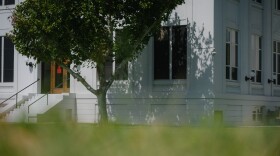It's surprising just how much an impact neighborhood design can have on your overall health. We spent time in two communities today, to find out what factors play the largest role.
Meet David Levinger. Pedestrian friendly neighborhoods are his specialty. We're in downtown Coronado, one of the most affluent communities in San Diego County. And it's also one of the most pedestrian-friendly, according to Levinger.
David Levinger, Walk America: The number one thing, it’s not that far away from where your house might be, where your workplace might be, and you have a mix of destinations to choose from.
The sidewalks are wide and the light fixtures are at street level. It all promotes destination walking. There are places to go in this neighborhood and they're easy to get to on foot.
Joanne Faryon: We've got a lot of traffic right now, but they're all driving slowly, so does that have an impact?
Levinger: It does, speed has many effects. The number one effect, it makes it more dangerous to cross a street. Noise and the interactions between motorists and pedestrians also make a difference. So everyone is a pedestrian, so when people are driving they get to participate in neighborhood life – if they're going slow enough.
But drive a few minutes over the Coronado Bridge into a poor community like Logan Heights and things change.
Levinger: There are some real differences here and let’s talk about those. One of the things, there are not the eyes on the street around us and across the street a blank-faced building, a car lot, those types of land uses can run counter to having a walk-able community.
On the plus side, Levinger says there are grocery stores within walking distance of the homes here. And there are sidewalks, although they are too narrow to walk comfortably. But overall, he says, there are too many negative signals that would discourage people from walking here.
Levinger:
This tree has been dead for a while now. It appears and it hasn't been replaced. The lighting is auto oriented street lighting, not pedestrian scale.
Levinger says income and environment influences how likely you are to be obese.
Levinger:
In a community where people don't feel safe enough to have their children walking to school, when they don't feel they can walk to a grocery store, do their shopping on foot, where stores may not locate, the destinations may not exist, then that comes out of our pockets collectively through rising health care costs. Also out of individual pockets and that's an injustice to people in these communities.
Levinger says in surveys, people often say safety is their number one concern when they consider whether they'll walk in a neighborhood.
The Surgeon General recommends 30 minutes of exercise five days a week. And that can be in three 10-minute chunks. So if you're walking to get your paper and coffee in the morning, walking to lunch or even walking home from work, you got the 30 minutes you needed.
A study published in the American Journal of Preventative medicine found that for every hour you spend in your car, you are 6 percent more likely to be overweight. So walking can make all the difference.




